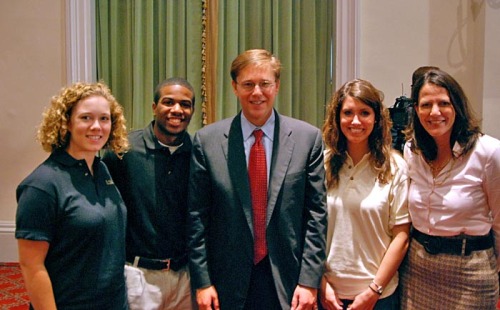Monday, September 8, 2008 10:16 pm
A female consumer just called into to WWAY and was highly upset—not with the early digital switch or mandate to at least purchase a converter box—but the lack to inform consumers of the possible necessity to purchase a new antenna.
Marie Robinson, a resident of Wilmington, was not a happy costumer. She felt angry and frustrated.
“I feel scammed by all these commercials and companies,” Robinson said. “If getting a new antenna was something they knew we might have to do, why did they not say our antennas would not work?”
Robinson did everything that she was told to do. She paid attention to the commercials. She knew the switch date. She purchased and installed a converter box to her television. According to her, she scanned for channels at least 5 times, and she even thought to adjust the antenna.
Still no signal. Instead, her manual recommends purchasing a new antenna if not receiving channels.
What is Robinson to do?
Robinson is of low-income. No car. One television. She doesn’t want all the channels, just the basic- channels 3, 6 and if possible, channel 10.
The last thing that she wants to hear is that she needs to purchase something else for her television to work.
“I know that a converter box or a new antenna doesn’t cost $1000,” said Robinson. “But still, that’s more money that I have to worry about.”
She worries if other low-income consumers will experience the same issue and hopes she isn’t the “odd-ball out.”
Ginny Larson of Brunswick County thinks to have consumers purchase the new equipment is an injustice, especially since it wasn’t the consumer who mandated the switch but the government. She doesn’t believe the coupons are enough.
“The FCC and the government should take on the expenses,” said Larson. “If they are going to mandate the switch, they need to buy the television or the new antenna.”
She applauds the FCC’s decision to focus attention on senior citizens, but believes just as much focus should have been directed toward others who cannot financially afford the switch.
Robinson and Larson were not alone in their concern and both bring up a very interesting point.
What about the low-income consumers?
How accurately did the FCC and all those who helped make the switch possible assess the potential outcomes that this transition would have for those who live paycheck to paycheck?
Yes. Numerous ads and
Yes. Coupons were provided to lower costs of converter boxes.
Yes. You really would have had lived under a rock not to know of the switch.
So what could possible be wrong?
Well what about the difference between the antennas—VHF and UHF?
Since our Elon crew has been here the impression has been that the common emphasis prior to the switch was to have cable or satellite, a digital television or purchase an analog-digital converter box. This information has been drilled over and over and over again to the residents of New Hanover and the surrounding counties, but there might have been one bit of information that was not emphasized—Very High Frequency (VHF) antennas no longer work in this market and must be replaced with an Ultra High Frequency (UHF) antenna.
And like Robinson and Larson, people are angry that they were not “told” this information.
Andy Combs is the general manager of WWAY, Wilmington’s local ABC affiliate. He believes the stations did a good job in providing consumers with an ample amount of information including on the UHF antenna, and if they didn’t know it was because they chose not to pay attention.
“Had they called the 800 number that we were providing to them, then they would have known that they needed to get an UHF antenna,” Combs said. “People sometimes have selected memory.”
The issue may be not all consumers know the difference between the UHF and VHF, or how to check for the difference on their own antenna.
Many of the calls that I received throughout the day were from elderly consumers who bought the converter box to go along with their OTA television sets, but didn’t know the difference between UHF and VHF. To them, an antenna was simply an antenna.
In all likelihood the consumers who own televisions of this model, have probably owned these televisions for at least 10-15 years. Consumers who own these televisions have had them for years—and their VHF antenna used to work.
Eugene Daniel



















































